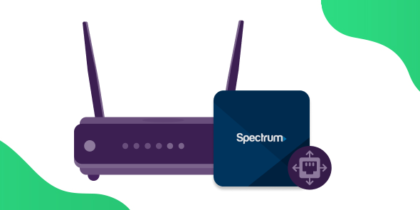Table of Contents
You may easily access your Kubernetes servers from your local computer by using the Kubectl port forward. You will learn more about Kubectl port forwarding in this blog.
This method known as port forwarding allows data traffic from the outside world to reach a device or network inside a private system; it makes connections between services on different private or public networks possible for a service operating inside a private network.
The interactive voice response IVR system serves as a router to connect another system to the relevant attendant serving as an example.
Port forward directs traffic to the internet server through the router setting the IP address port mapping adds security layers preventing unwanted traffic from entering the network.
Using a similar idea kubectl is a command line tool that you may use to manage Kubernetes servers.
This includes tips on how to overcome Cgnat and set up port forwarding more easily you will also discover a simple add-on

What is Kubectl Port Forwarding?
For data analysis and problem-solving, Kubernetes servers may be visited privately, sometimes without providing public access to the application.
By blocking unwanted external traffic from being exposed to applications through load balancers and ingresses, port forwarding improves security by allowing local group assessment.
Using Kubectl port-forward, you may connect to, control, and interact with internal Kubernetes servers right from your local network. Investigating problems with your apps is a common use of this method.
Kubectl is a command-line tool for managing Kubernetes networks and providing instructions. To send orders to the server’s control plane, it makes use of Kubernetes APIs. To put it simply, Kubectl allows you to handle almost any task within your Kubernetes system.
What to Collect Before You Get Started
- Your router’s default IP address
- A device’s static IP address for port forwarding
- The protocols and ports connected to TCP/UDP
- Entering your router’s login and password
Steps to Set Kubectl Port Forward
To set up port forwarding using Kubectl use the following steps:
- Install and set up Kubectl first make sure your local computer is running Kubectl and that it is set up to connect to your Kubernetes network.
- Select the pod or pod(s) from which you want to forward ports to view a list of the available pods in the network using the kubectl get pods command.
- Apply the “port forwarding kubectl” command the command may be written as follows [resource-type]/[resource-name] [local-port]:[resource-port] use the following command,
For example, to redirect local port 8080 to port 80 on “my-app-pod” in the “default”
Namespace.
- Make a safe tunnel by using the “kubectl port-forward” command you may create a safe tunnel from your local computer to the specified Kubernetes server resource
- This frees you from the burden of complicated networking configurations so that you can focus on debugging and resolving network issues get into the service after port forwarding is configured open http localhost 8080 on your local computer to access the service
Bear in mind that the kubectl port-forward feature is limited to TCP ports UDP protocol support is being monitored as a potential bug.
The Common Ports That Your Kubectl May Use Include:
The following are typical ports that your Kubectl router could use:
Control Plane Ports:
- Kubernetes API Server: 6443 (default) or 443 (often changed to 443 for HTTPS)
- Etcd API for the server client: Ports 2379–2380
- API for Kubelet: Port 10250
- Kube-schedule: Port 10259.
- Kube-controller Manager: Port 10257
Worker Node Ports:
- Kubelet API: Port 10250
- Services provided by NodePort: Port range 30000-32767 (default)
The API server, Etcd, Kubelet, and NodePort Services are just a few of the Kubernetes services and components that use these ports. You might need to be aware of these ports while setting port forwarding to guarantee correct communication with the Kubernetes cluster.
Grab PureVPN Add-on to Set Up Port Forwarding Fast
If the manual setup looks like too much work for you, get the PureVPN port-forwarding add-on. Setting up port forwarding on any router from any location just takes a little basic knowledge about networking. Here’s how it functions:
- Go into PureVPN’s member area.
- Access the Subscription menu.
- Click to Configure.
- Select the necessary port settings.
- To apply the settings, click Apply.
Your Solution to Accessing and Forwarding Ports Behind CGNAT
Your ISP may use CGnat to save IPV4 addresses which makes it more difficult for you to access or forward ports on your router because they lack a public IP address devices protected by Cgnat are unavailable over the internet
As a result, your router can be issued a private IP address from the network of your ISP this IP address is first converted to the CGNAT gateway’s public IP address before being sent to the internet
To put it simply there may be additional setups needed and the port forwarding process on the CGnat gateway can be complex furthermore some ps may charge extra or not let their users set up port forwarding rules on the Cgnat gateway
So, what’s the best solution? Click on the link to find out!
The Most Straightforward and Secure Way to Forward Ports
Are you having issues setting port forwarding on your router as a result of CGNAT? Don’t worry! You may easily and quickly access, forward, allow, and block any necessary ports with just a few clicks with PureVPN’s port forwarding add-on.
Also, no matter where you are or whose internet service you’re using, you can access your router’s settings with the add-on and set or stop port forwarding rules. To find out more about the benefits of combining PureVPN with the port forwarding add-on, follow this link.
What is the difference between kubectl proxy and kubectl port-forward?
“kubectl port-forward” works well for directing traffic toward specific Pods, while the Kubernetes API server, a web server that exposes the API, is the best option for broad cluster access.
Can you port forward to a service in Kubernetes?
When creating Kubernetes applications, it can be helpful to be able to rapidly access a service from your local environment without installing it through the usage of an input resource or load balancer, for example. It is possible to employ port forwarding in such situations.
Is it OK to port forward?
Make sure you or your IT staff can set up port forwarding because it might be risky if done incorrectly. Similarly, you should confirm that the managed firewall provider you use can carry out this task securely.
Final Thoughts
This blog covers the requirements, steps, and common ports required to set up the Kubectl port forward. It also describes in brief how to forward ports on routers that are behind CGNAT. To set up port forwarding like an expert, with or without the difficulties of CGNAT, try PureVPN’s port forwarding add-on right now!



